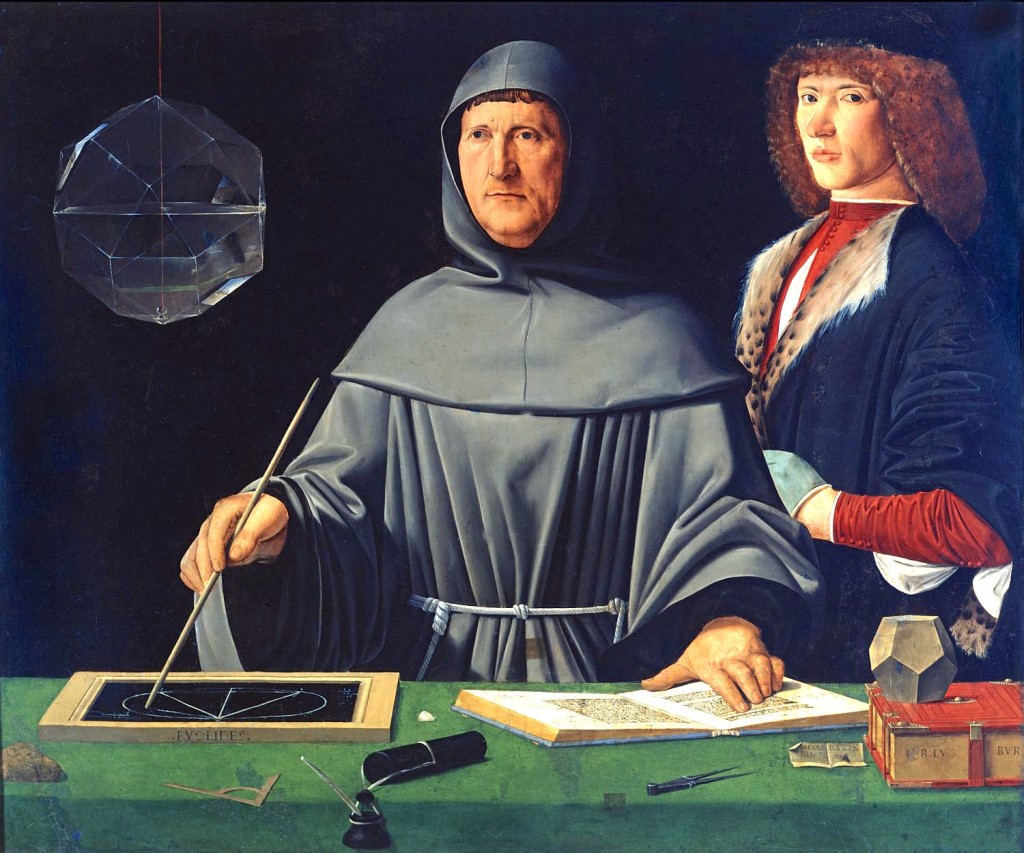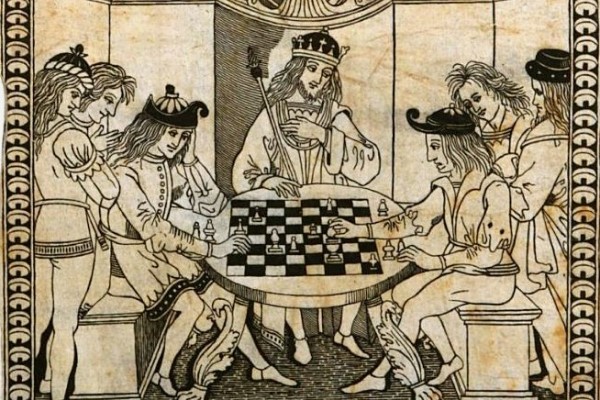Part 3: The poem's historical relevance
This is the last of a three-part series. Part 1 was an introduction; in Part 2 we presented the game as it was described in the poem.
The existence of this poem and the probable date of its creation (1475) are taken as proof that the expansion of the queen's mobility is related to the reign of Isabella I of Castile (1451-1504). In 1474, she was anointed as sovereign of Castile and, when she married Ferdinand II of Aragon years later, she became a powerful figure, with vast worldwide significance.
This thesis is certainly very persuasive, as it takes into account the strength that the still-to-come Kingdom of Spain would eventually gain. Moreover, we must admit that Isabella played a role in making the expanded movement of the chess queen socially and culturally acceptable. However, she did not do it by herself, as we will clarify by referencing to other historical events from the time. In other territories, foreign to the Iberian Peninsula, previous literary mentions to a piece with a female face prove this point.
 The existence, in what would later become Italy, of Pacioli's [pictured] Ludo scacchorum — contemporary to the works of Vicent and Lucena (posterior to Scachs d'amor) — prompts us to think that the modern rules of chess might have been the product of a process that occurred in relative simultaneity in various territories. And, by pointing this out, we do not mean to lessen the worthiness of the Valencian School which, without a doubt, had a powerful impact insofar it transmitted the innovations made to the rules of chess in written form.
The existence, in what would later become Italy, of Pacioli's [pictured] Ludo scacchorum — contemporary to the works of Vicent and Lucena (posterior to Scachs d'amor) — prompts us to think that the modern rules of chess might have been the product of a process that occurred in relative simultaneity in various territories. And, by pointing this out, we do not mean to lessen the worthiness of the Valencian School which, without a doubt, had a powerful impact insofar it transmitted the innovations made to the rules of chess in written form.
What must be completely ruled out is the theory that the queen in chess appeared due to Isabella I of Castile, as it has been defended with more enthusiasm than proof. Many previous references to the piece were made in Medieval Literature, beginning with Versus de scachis, a Latin poem from the late 10th century, where a Regina is mentioned. The text was conceived in a monastery of the Holy Roman Empire of the German Nation in a territory that nowadays belongs to Switzerland.
Similar mentions were made in other works. In England, De scaccis by Alexander Neckam (1157-1217) and the Winchester Poem — both from the 12th century — are two examples. In France, in Les Miracles de Nostre Dame by Gautier de Coincy (1178-1236) and in the poem De vetula, once attributed to Ovid but actually written by Richard de Fournival (1201-1260). In Germany, Hugo von Trimberg (c. 1230-1313) compared life to chess in Der Renner, noting that God is "playing a silly game with us".
We should not lose sight of the contribution of Jacobus de Cessolis (c. 1250-1322), a Lombard settled in Genoa who wrote the book that served as the biggest tool for the propagation of the game during the Middle Ages, Liber de moribus hominum et officiis nobilium super ludo scacchorum ('Book of the customs of men and the duties of nobles or the Book of Chess'). A large section of this work is entirely dedicated to the queen.
Back to Scachs d'amor
 Learn about one of the greatest geniuses in the history of chess! Paul Morphy's career (1837-1884) lasted only a few years and yet he managed to defeat the best chess players of his time.
Learn about one of the greatest geniuses in the history of chess! Paul Morphy's career (1837-1884) lasted only a few years and yet he managed to defeat the best chess players of his time.Returning to Scachs d’amor, which is what this is about, the poem exhibits several merits. Firstly, the Valencian poem is of a moving beauty, both in its conception and in its execution. Secondly, it presented the modern rules of chess. And, finally, it is completely indisputable, at least in the current state of investigation, that the game that it portrays represents the first complete transcript of an encounter that followed the chess regulations which would become the norm since the 15th century of the Christian era.
Given the geographical location of this poem and that of Vicent's text (which emerged in the same region but a little later), it is entirely plausible to conclude that, just as chess was born somewhere in the East — in a place and time indeterminate, with the undoubted contribution of India and, almost certainly, with the influence of games coming from China and, perhaps, the Hellenic culture — and then underwent a process of dissemination in which, in addition to the Italic and Iberian Peninsulas, Persian, Arabic and Byzantine cultures advanced the game of chess, the so-called "Valencian School" made valuable contributions to the modernization of the royal game.
Therefore, Scachs d’amor is a clear, irrefutable and perhaps pioneering proof of the Hispanic contribution to the definitive delineation and universalization of chess.
An astrological clarification
In Part 1 of this series, it was stated:
One of the main reasons for which this poem is considered to have been conceived in 1475 has to do with the fact that on the 30th of May of said year an astral conjunction made the three planets — Mars, Venus and Mercury — visible from the Earth.
 Silvia Méndez, a certified astrologer since 1989 and a personal friend, analysed this claim. She concluded that the conjunction of the three planets (Mercury, Mars and Venus) was only verified on April 3rd, 1475, and that this phenomenon could be seen from the Northern Hemisphere.
Silvia Méndez, a certified astrologer since 1989 and a personal friend, analysed this claim. She concluded that the conjunction of the three planets (Mercury, Mars and Venus) was only verified on April 3rd, 1475, and that this phenomenon could be seen from the Northern Hemisphere.
Likely, this discrepancy with the date found in other sources has to do with the fact that in that century the Julian Calendar was still in use (Julius Caesar adopted it in 46 BC). This calendar was only modified in the 16th century by Pope Gregory XIII (1502-1585). The difference between the two is approximately ten days.
As for the astronomical precision, we should take into account that Scachs d'amor does not have a definite publication date, and that giving 1475 as the year of its conception is still a subject of speculation.
In any case, given this divergence, we should, preferably, interpret the reference to the date it was conceived in a metaphorical sense.
Translation from Spanish: Carlos Colodro
References
Gómez Redondo, F. (2014, February 10). Scachs d’amor. El ajedrez y la literatura (20). Centro Virtual Cervantes.
Gómez Redondo, F. (2014, February 10). Lances de amor y de ventura. El ajedrez y la literatura (21). Centro Virtual Cervantes.
Gude, A. (2017, January 22). El poema «Scachs D’Amor».
López de Segura, R. (1561). Libro de la invención liberal y arte del juego del ajedrez. Casa de Andrés de Angulo, Alcalá de Henares (España).
Ferrando, A. (1978). Narcís Vinyoles i la seua obra. Universitat de Valencia.
Links


















 The existence, in what would later become Italy, of Pacioli's [pictured] Ludo scacchorum — contemporary to the works of Vicent and Lucena (posterior to Scachs d'amor) — prompts us to think that the modern rules of chess might have been the product of a process that occurred in relative simultaneity in various territories. And, by pointing this out, we do not mean to lessen the worthiness of the Valencian School which, without a doubt, had a powerful impact insofar it transmitted the innovations made to the rules of chess in written form.
The existence, in what would later become Italy, of Pacioli's [pictured] Ludo scacchorum — contemporary to the works of Vicent and Lucena (posterior to Scachs d'amor) — prompts us to think that the modern rules of chess might have been the product of a process that occurred in relative simultaneity in various territories. And, by pointing this out, we do not mean to lessen the worthiness of the Valencian School which, without a doubt, had a powerful impact insofar it transmitted the innovations made to the rules of chess in written form. Silvia Méndez, a certified astrologer since 1989 and a personal friend, analysed this claim. She concluded that the conjunction of the three planets (Mercury, Mars and Venus) was only verified on April 3rd, 1475, and that this phenomenon could be seen from the Northern Hemisphere.
Silvia Méndez, a certified astrologer since 1989 and a personal friend, analysed this claim. She concluded that the conjunction of the three planets (Mercury, Mars and Venus) was only verified on April 3rd, 1475, and that this phenomenon could be seen from the Northern Hemisphere.




